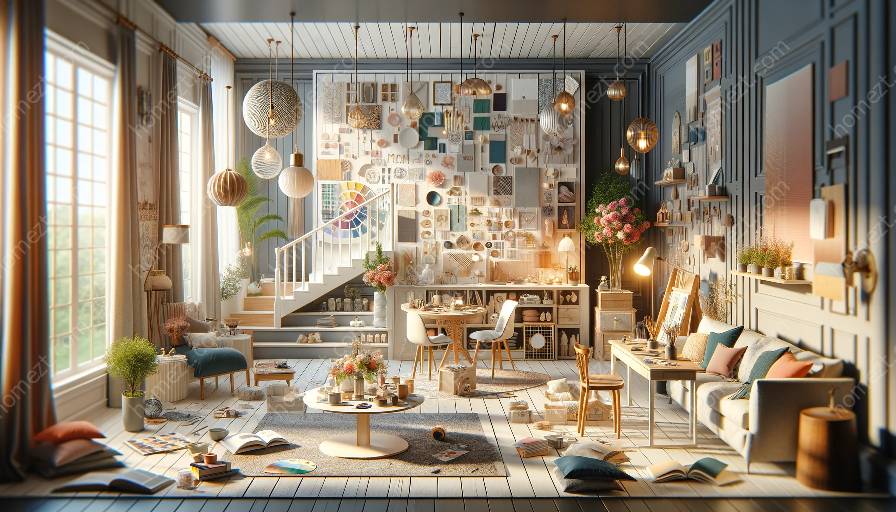Interior design is a complex, multi-faceted discipline that requires a balance of creativity, technical know-how, and a keen understanding of human emotions and psychology. At the heart of this process lies the concept of mood boards, which play a crucial role in shaping the aesthetic and functional aspects of a space. In this comprehensive guide, we'll explore the significance of mood boards in the interior design process and their relationship with design concepts and styling.
The Essence of Mood Boards
Definition: Mood boards, also known as inspiration boards, are collages or visual compositions that bring together various elements such as colors, textures, patterns, materials, and furnishings to set the tone and mood for a design project. They serve as a visual tool for designers to convey and articulate their ideas, inspirations, and design directions.
Mood boards are the foundation upon which the entire design process is built. They are instrumental in guiding the design process, ensuring a coherent and harmonious outcome, and communicating the intended aesthetic and emotional impact of a space. Through the careful curation of images, textures, and materials, mood boards serve as a powerful medium for capturing the vision and essence of a design concept.
The Interplay of Mood Boards and Design Concepts
Understanding Design Concepts: Design concepts are the fundamental ideas and principles that underpin the creation of an interior space. They encompass a broad range of considerations, including functionality, aesthetics, spatial layout, and the overall user experience. Mood boards act as a bridge between abstract design concepts and tangible visual representations, offering a medium through which designers can translate their conceptual visions into concrete, relatable elements.
Mood boards play a pivotal role in refining and solidifying design concepts. They enable designers to experiment with different combinations of colors, textures, and materials, allowing them to test the visual and emotional impact of these elements within the context of the intended design concept. By visually articulating the key elements of a design concept, mood boards provide a comprehensive reference point for both designers and clients, fostering a shared understanding and alignment of vision.
The Impact of Mood Boards on Interior Design and Styling
Enhancing Creativity and Innovation: In the realm of interior design and styling, mood boards serve as catalysts for creativity and innovation. They encourage designers to explore unconventional pairings of colors, textures, and styles, fostering a spirit of experimentation and originality. By collating diverse visual and tactile stimuli, mood boards empower designers to break free from conventional design norms and venture into new realms of artistic expression.
Moreover, mood boards foster a holistic approach to interior design and styling, allowing for the integration of diverse influences and inspirations into a cohesive and unified design narrative. They encourage designers to draw inspiration from a wide array of sources, ranging from art and fashion to nature and cultural heritage, thereby enriching the design process with depth and authenticity.
The Practical Application of Mood Boards
When applied in practical terms, mood boards serve as invaluable tools for streamlining the collaborative design process. They facilitate effective communication between designers, clients, and other stakeholders, enabling all parties to align their expectations and aspirations regarding the final design outcome. Moreover, they provide a tangible reference point for decision-making, allowing for informed choices regarding color schemes, materials, and overall design direction.
From a stylistic perspective, mood boards contribute to the creation of cohesive and visually captivating interiors. By juxtaposing various design elements within the context of a mood board, designers can evaluate their synergistic effects, ensuring a harmonious and visually compelling composition that resonates with the intended emotional and aesthetic goals.
In Conclusion
The utilization of mood boards in the interior design process represents a synthesis of artistic vision, practicality, and emotional resonance. By embracing the collaborative and communicative potential of mood boards, designers can create spaces that not only fulfill functional requirements but also evoke profound emotional responses and resonate with the unique identity of their users. Through the synergy of mood boards, design concepts, and styling, interior design transcends its utilitarian purpose and emerges as a powerful medium for visual storytelling and emotional connectivity.


























